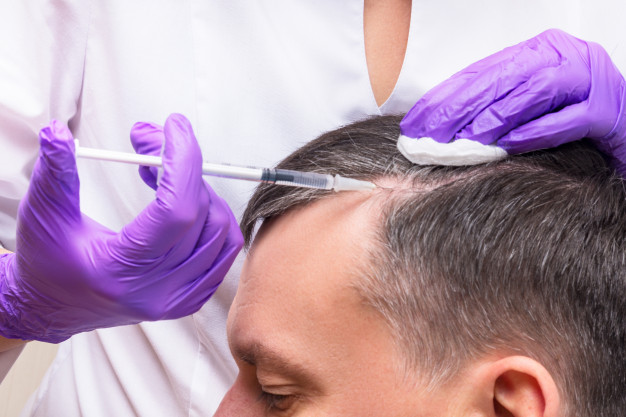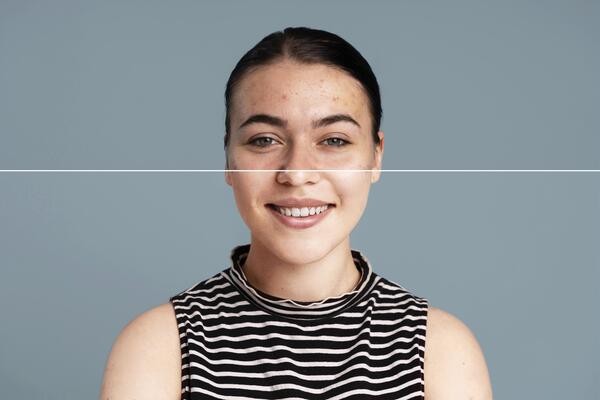
Hair Transplant Surgery: A Chronology.
Hair transplantation is perhaps your best bet if you wish to relive those days of your younger self when you had lush, thick, beautiful hair. Today, there are plenty of modern surgery techniques available, which promise painless and quick hair transplantation with excellent results. However, this was not the case always. Science is a constantly evolving field, and even hair transplantation techniques have undergone a significant amount of advancement since, the first time the idea was, conceived. Through this blog, we are going to look at a comprehensive history of hair transplant and look at how far this revolutionary cosmetic surgery technique has come. Let us start with Hair Transplant Surgery: A chronology.
Where did it all start?
Modern hair transplant techniques are, done mostly for cosmetic purposes. Ironically, this was not the actual reason why hair transplant techniques were, invented in the first place. In fact, the first occurrence of hair transplantations dates back to the 19th century. Favus, a disease that usually affects the scalp and leads to complete baldness was the motivation for Menahem Hodara to perform the first-ever hair transplant to re-grow hair on the affected area. This blog talks about Hair Transplant Surgery: A Chronology.
In the 1930s, Japan’s growth was moving exponentially and consequently was its medical sector. Japanese dermatologists started experimenting with many different hair transplantation techniques that also included the technique of using “Follicular Unit Grafts”. However, these new techniques were not, used for transplanting hair onto balding areas; rather they were just used for extracting hair from the eyebrows or eyelashes. These techniques also remained largely unknown for more than a decade due to the conditions then.
Moving towards the 1950s, Dr Norman Orentreich an American dermatologist begin experimenting by using the scalp grafts from the unaffected areas and transplanting them to the affected bald areas. Previously, it was widely accepted by many doctors that transplanting such grafts would not make any difference, as they would only last as much as the hair lasted originally on the bald area. This misconception was in fact, busted by Orentreich’s experiments on patients diagnosed with Androgenic Alopecia.
Walter Unger laid down the foundations of “Safe Donor Zones”, which are followed until today. Further, many different techniques such as Follicular Unit Extraction (FUE) and Follicular Unit Transplantation (FUT) were also, discovered over the course of the next two-four decades.
Many Different Techniques
- Plugs: As discussed earlier, Dr Orentreich was the first dermatologist to popularise the hair transplantation techniques discovered in Japan and treat male pattern baldness for the first time. This technique did change the field of hair transplantation for the time being. The concept of “donor dominance” was, introduced for the first time, which laid down the basic principles for modern hair transplantation. However, this technique did not hold on for a long time. The problem with this technique was that it merely made use of the scalp grafts and promised to grow hair on the recipient side. This was not enough as the grafts utilised for the transplants were small and hence, the results obtained were not so satisfactory. As the simplest solution to this, dermatologists started using grafts larger in size. These grafts were, known as “plugs” and resulted in the doll’s head-like appearance. Although this technique did not yield optimal results, at the time this was a widely used technique. Nevertheless, as the field was constantly evolving, newer and better techniques were, introduced in the coming years and the field saw some significant improvements.
- Mini-Micro Grafting- Almost three decades later, in the year 1984, after the somewhat success of the “plug” technique, dermatologists felt the need for a newer technique. Hence, they came up with the Mini-Micro grafting technique. This technique utilised the method of making smaller grafts known as “mini grafts” from a donor tissue rather than punching out a strip from the scalp on the back of the head. They took it even a bit further by cutting even smaller grafts from the mini grafts forming “Micro grafts” and using them in conjunction with mini grafts. This came to be, known as “Mini-Micro Grafting”. The technique provided a natural-looking result. This technique was also much better than the plug technique and surpassed it to become the main form of hair restoration for the coming years. In the mid-1990s, an extended version of this technique known as “Mega Sessions” that utilised a number of Mini-Micro grafts instead of the usual ones. This resulted in the hair transplantation sessions taking more time hence, the name. This new technique did not really have any new requirements for the surgeons to comply with, as they required the same skills as for the regular sessions. In addition, due to the excessive use of such grafts, the results often ended up looking “pluggy” and thin. The technique also resulted in larger wounds, more recovery time, and inconsistent graft-growth.
- FUT (Follicular Unit Transplantation)- In non-technical language, follicular units are naturally occurring groups of 3-4 hairs. FUT is a technique devised by Dr Bernstein and Dr Rassman in the year 1994, almost a decade later the introduction of the Mini-Micro grafting technique. The idea was simple, rather than transplanting entire grafts, just transplant grafts that contain the follicular units. This new technique was about to revolutionise the entire hair transplantation industry. However, as soon as the technique was, introduced to the medical community it was, met with serious backlash. The reasons were, simple. This new technique required doctors to learn a completely new set of skills such as the use of a stereo microscope without which the technique was useless. However, Bernstein and Rassman knew the various benefits of the technique and were relentless. Over the course of the coming years, the technique proved to be useful for many patients. Eventually, dermatologists had to hesitantly, accept the technique and since then, it has been one of the main techniques for hair restoration. By the year 2000, FUT had attained the “gold standard” as a hair transplantation technique. However, even this technique had its drawbacks. The technique required for a strip of scalp to be, sliced-off from the back of the head. Hence, the area from where the strip was, removed needed to be sutured often leaving a scar making this procedure very invasive, and thus, a new procedure needed to be, introduced that could change the history of hair transplantation.
- FUE (Follicular Unit Extraction): The year was 2002, and a new hair transplantation technique known as Follicular Unit Extraction was, introduced. This new technique was, based on the plug technique introduced by Dr Orentreich and the FUT method. Ever since the introduction of FUT, after all the backlash and scepticism it faced, finally, it was being widely accepted. The technique itself provided very natural and permanent results however; it had its own drawbacks that needed to be, addressed. These drawbacks were, resolved through the introduction of FUE. In FUE, instead of cutting a strip of scalp from the back of the head, the area from where the follicles are going to be, extracted is, completely shaved off any hair. Then a punch-like device is, used to extract the hair follicles directly rather than cutting a strip of the scalp. These extracted follicles are, then transplanted in the bald area. The procedure is minimally invasive and causes no pain to the patient. However, it does take a lot of time and is expensive compared to all the other techniques. As the technique requires extreme precision, the surgeon and the staff both required additional training. Consequently, this technique also received significant backlash from the hair restoration community. However, this backlash did not seem to last long enough as the demand for this surgery increased rapidly and people seemed to quickly, move on from FUT to FUE because of the added benefit of no scarring. This technique surely changed the history of hair transplantation and is now the golden standard. Although FUT is still, practised, FUE seems to have the upper hand as newer advancements are, introduced to aid the technique with much more precision. The use of robots for FUE is the most modern technique; this improves the accuracy as well as the precision in the entire procedure while making it less time-consuming and easier for the patient as well as the dermatologist. The introduction of the Longhair Robotic FUE by Dr Bernstein is an example. This robotic technique ensures that the patients’ donor side does not need to be, completely shaven for extracting follicular units. Many new advancements are still being, observed in the area of hair transplantation with many new techniques being developed, meeting all the patients’ requirements while still maintaining a natural look.
Conclusion
From all of the above, examples we can see hair Transplant Surgery: A Chronology. From traditional hair transplantation techniques, which did the job they were designed for but did not provide satisfactory results to modern techniques, which even after receiving significant backlash, prevailed and have achieved a standard previously deemed unachievable. Hair transplantation truly is a beautiful procedure and even more beautiful is the history associated with it.
Nevertheless, the entire field would not be, so popular if it was not for great physicians such as Menahem Hodara, Dr Norman Orentreich, Dr Walter P. Unger, Dr Bernstein, Dr William Rassman, and many others who pioneered the various advancements in the field and made it what it is today. Surely, if it were not for the efforts of experienced and driven dermatologists such as them, the field would have remained underrated. Moreover, when it comes to experience, motivation, and love towards the field we cannot help but include Dr V.S. Rathore on the list too.
Dr Rathore is an outstanding surgeon and an exceptional human being. With a vision to, successfully grow as a result-oriented surgeon Dr Rathore started out as a surgeon after seeing many different people suffering from trauma and could not get the proper surgery. He has been, focused on flourishing the well-being of his patients, satisfy all their wants, and needs since, 2003. With over 9000 successful surgeries and more than 2100 Hair transplants, he surely has helped his patients gain the self-confidence they had lost to age and time.
Dr Rathore and his team offer many more services other than hair transplants such as Male breast correction, Male genital surgery, Female genital surgery, Sex change, Scar management, Laser surgery, and Cosmetic breast surgery. With the core values of keeping the patient first, maintaining professionalism, and respecting everyone, Dr Rathore and his team are always available for fulfilling any needs and helping their patients 24/7. All you have to do is contact us and book an appointment with us, and our expert staff along with Dr Rathore will always be glad to help you.







